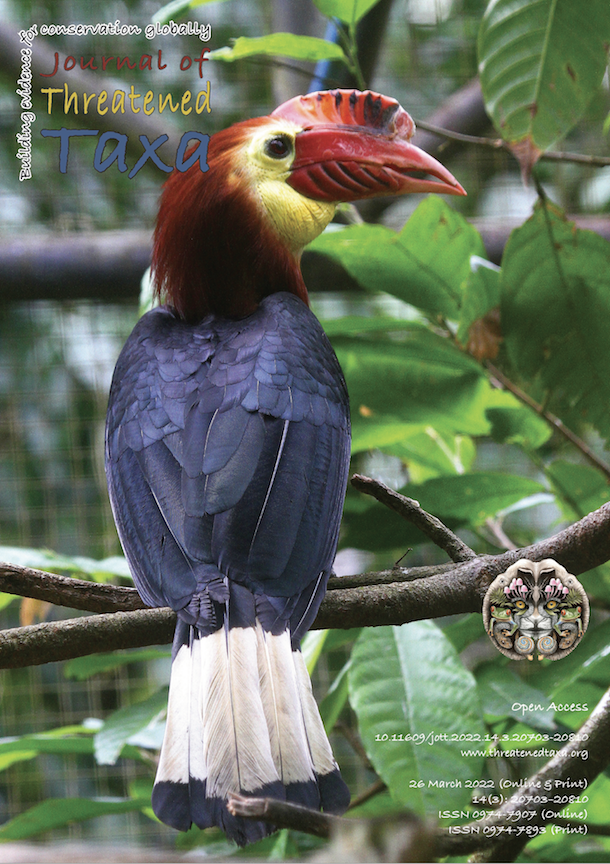Abnormalities in the female spikelets of Coix lacryma-jobi L. (Poaceae) India
Main Article Content
Abstract
Genus Coix L. belongs to family Poaceae Barnhart is native to tropical regions of southern Asia to Australia and represented by six taxa (3 species + 3 infraspecific taxa) worldwide. In India it is represented by two species and three varieties. In which Coix lacryma-jobi L. is most diverse taxon all over the world. Fruits of Coix is one of the important characters for the species. In the present communication some abnormalities of female spikelets (utricle) of C. lacryma-jobi in context with number of female spikelets and appearance of leaf blade with different length on utricle are reported for the first time. The abnormalities are showed affinities with related taxa.
Article Details

This work is licensed under a Creative Commons Attribution 4.0 International License.
Authors own the copyright to the articles published in JoTT. This is indicated explicitly in each publication. The authors grant permission to the publisher Wildlife Information Liaison Development (WILD) Society to publish the article in the Journal of Threatened Taxa. The authors recognize WILD as the original publisher, and to sell hard copies of the Journal and article to any buyer. JoTT is registered under the Creative Commons Attribution 4.0 International License (CC BY), which allows authors to retain copyright ownership. Under this license the authors allow anyone to download, cite, use the data, modify, reprint, copy and distribute provided the authors and source of publication are credited through appropriate citations (e.g., Son et al. (2016). Bats (Mammalia: Chiroptera) of the southeastern Truong Son Mountains, Quang Ngai Province, Vietnam. Journal of Threatened Taxa 8(7): 8953–8969. https://doi.org/10.11609/jott.2785.8.7.8953-8969). Users of the data do not require specific permission from the authors or the publisher.
References
Arora, R.K. (1977). Job’s-tears (Coix lacryma-jobi) A minor food and fodder crop of northeastern India. Economic Botany 31: 358–366. DOI: https://doi.org/10.1007/BF02866887
Bor, N.L. (1960). The grasses of Burma, Ceylon, India, and Pakistan, excluding Bambuseae. Pergamon, New York. DOI: https://doi.org/10.1097/00010694-196111000-00009
Li, D.P. (2006). Research advance on ethnopharmacology, pharmacodynamics, pharmacokinetics and clinical therapeutics of Coix seed and its preparation, Kanglaite injection. Asian Journal of Pharmacodynamics and Pharmacokinetics 6(2): 83–102.
Simon, B.K. (1989). A new species of Coix L. (Poaceae) from Australia. Austrobaileya 3(1): 1–5.
Xi, X.J., Y.G. Zhu, Y.P. Tong, X.L. Yang, N.N. Tang, S.M. Ma, S. Li & Z. Cheng (2016). Assessment of the genetic diversity of different job’s tears (Coix lacryma-jobi L.) accessions and the active composition and anticancer effect of its seed oil. PLoS ONE 11(4): e0153269. https://doi.org/10.1371/journal.pone.0153269 DOI: https://doi.org/10.1371/journal.pone.0153269

